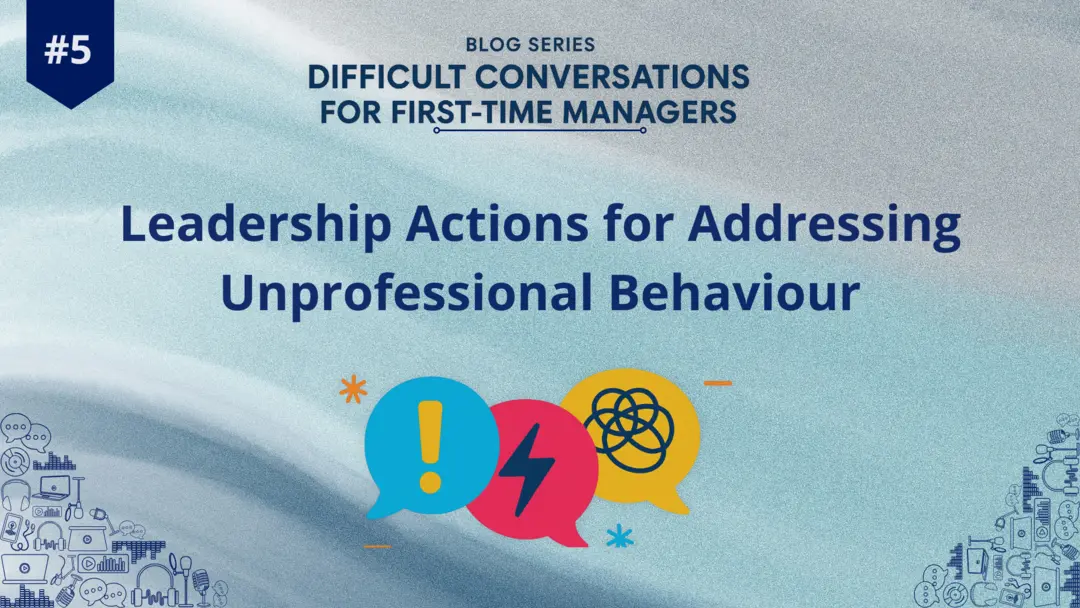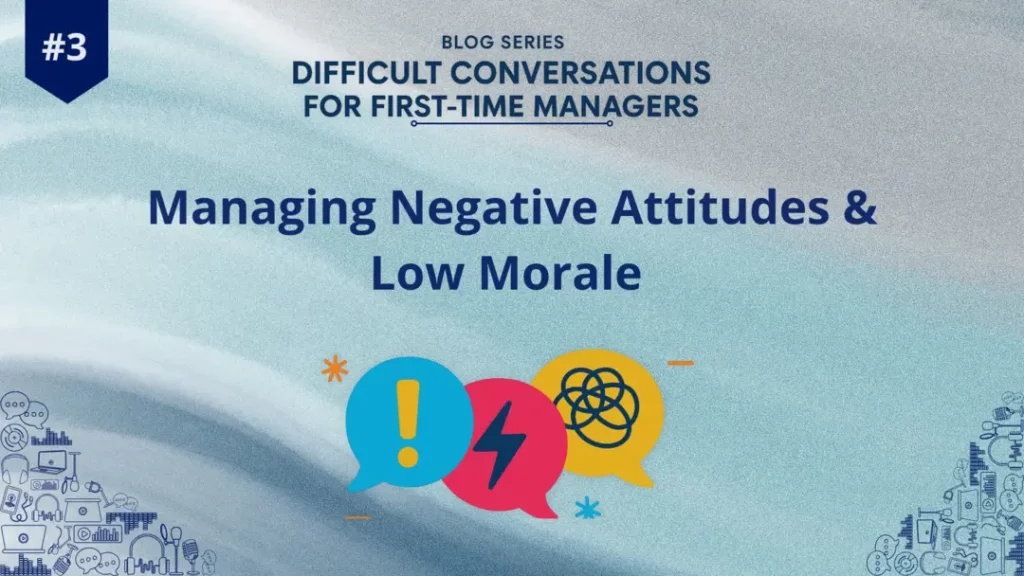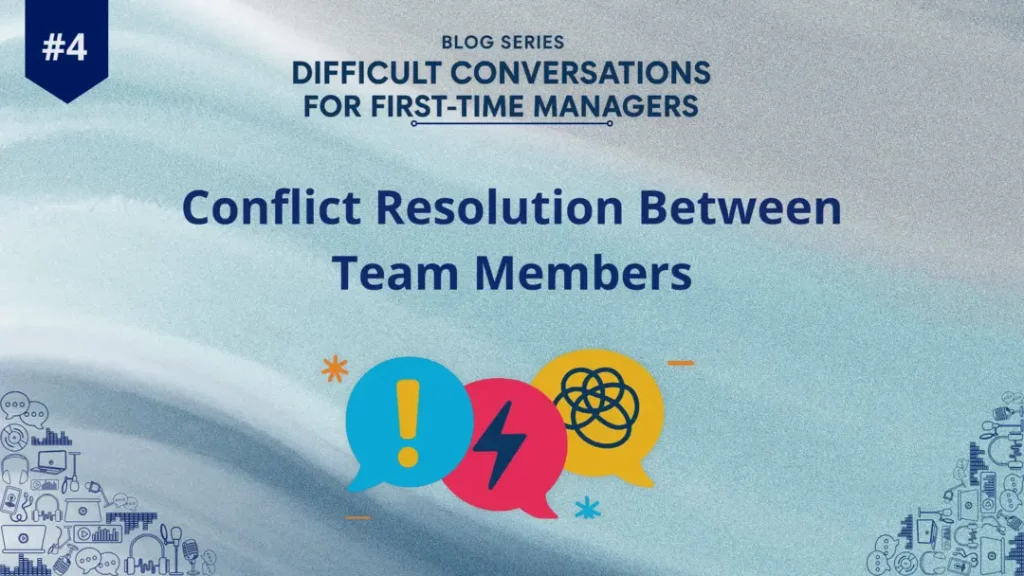Are You a Leader or Just a Boss? Addressing Unprofessional Behaviour the Right Way


Imagine this: You walk into the office, energized for the day, but as the morning unfolds, you hear a team member snapping at a colleague. Later, in a meeting, another employee constantly interrupts, dismissing others’ ideas. You know this behaviour is unhealthy, but you hesitate. Should you intervene? Will it make you seem too harsh? Or should you ignore it and hope things improve on their own?
Welcome to one of the toughest dilemmas of leadership—handling unprofessional or disrespectful behaviour. If you’ve recently stepped into a managerial role, confronting team members on their conduct can feel uncomfortable. But here’s the truth: Leadership isn’t just about hitting targets; it’s about building a culture of respect and accountability.
So, how can you, as a first-time manager, address these issues with confidence while maintaining trust and professionalism? Let’s dive in.
Why This Conversation Feels Difficult
Many new managers hesitate to address workplace behaviour because they fear: Being seen as overly strict or micromanaging Damaging their rapport with the team Not knowing how to phrase the conversation correctly
However, avoiding the conversation only worsens the problem. Unchecked disrespectful behaviour spreads, lowers morale, and affects team performance. A leader’s silence can be interpreted as approval.
Actionable Insight: Treat this conversation as an opportunity to reinforce team values rather than as a confrontation.
Step 1: Recognizing Unprofessional or Disrespectful Behaviour
Before you step in, be clear on what qualifies as unprofessional behaviour. In an Indian workplace, common examples include:
Interrupting or speaking over others in meetings – Often seen as a sign of confidence, but when excessive, it undermines collaboration. Making disrespectful or sarcastic remarks – A joke at someone’s expense might seem harmless but can damage relationships. Ignoring or dismissing colleagues’ ideas – Leads to disengagement and kills innovation.
Passive-aggressive communication – E.g., “I’m the only one who cares about deadlines here.” Late responses or non-responsiveness to work messages – Shows disregard for others’ time and priorities.
Key Leadership Principle: Separate behaviour from the person. Your goal isn’t to criticize an individual but to correct the behaviour for a healthier work culture.
Step 2: Preparing for the Conversation
Great leaders don’t jump into difficult conversations unprepared. Here’s how you can approach this professionally:
Choose the Right Setting
Avoid discussing behavioural issues in front of others. Schedule a private one-on-one meeting where the employee feels comfortable.
Gather Specific Examples
Instead of saying, “You’re being rude in meetings,” say: “In yesterday’s meeting, when Rahul was presenting, you interrupted twice before he could finish. I’d like to talk about how we can ensure everyone’s ideas are heard.”
Prepare for Different Reactions
Some employees might not even be aware of their behaviour. Others might get defensive. Be ready to stay calm and guide the conversation productively.
Step 3: The Actual Conversation – A Step-by-Step Approach
Leadership in Action: Think of this as coaching, not scolding.
Step 1: Start with a Positive Intent
“I really value the enthusiasm and expertise you bring to our team. I want to talk about something I’ve observed that, if improved, could make our collaboration even stronger.”
Step 2: Address the Behaviour Objectively
“I noticed that in team discussions, there have been instances where you’ve interrupted others before they could complete their thoughts. I wanted to check in and understand your perspective.”
Step 3: Allow the Employee to Respond
Be open to hearing their side. They might say:
· “I didn’t realize I was doing that.”
· “But I was just trying to get things moving faster.”
Step 4: Explain the Impact “I understand, and I know you have great ideas to contribute. However, when interruptions happen, it can discourage others from sharing their thoughts and affect team collaboration.”
Step 5: Offer a Solution & Set Expectations
“Moving forward, let’s ensure everyone gets a chance to finish speaking before responding. This will make our discussions more effective.”
Step 6: End with Encouragement
“I appreciate your willingness to work on this, and I know you’ll help make our meetings even more productive.”
Result: The employee understands the issue, feels supported, and has clear steps to improve.
Step 4: Following Up & Reinforcing Positive Behaviour
The conversation doesn’t end here. Consistent reinforcement is key:
Recognize improvements – “I noticed you gave space for others to speak today. That really helped!”
Encourage self-awareness – “How do you think today’s discussion went? Any thoughts on what worked well?”
Check in after a few weeks – “How do you feel about the changes we discussed? Any challenges?”
Key Leadership Principle: Follow-up shows that you care about growth, not just correction.
Final Thoughts: Leadership is About Shaping Culture
Leadership is not about being the most powerful person in the room—it’s about creating an environment where people feel respected, valued, and inspired to do their best work.
As Ratan Tata wisely said, “If you want to walk fast, walk alone. If you want to walk far, walk together.”
When you address unprofessional behaviour firmly yet thoughtfully, you’re not just correcting one person—you’re shaping the work culture for your entire team.
The best leaders don’t avoid difficult conversations; they master them. Will you?
This article is contributed by the GlobalGyan Editorial Team as part of our Leadership Essentials series.
In our series ‘Difficult Conversations for First Time Managers’ by Guan D’Penha, Senior Manager – Learning Solutions at GlobalGyan Leadership Academy, we will be sharing insights on the challenges faced by first-time managers.
In the next chapter, we explore a conversation every leader must master—Overcoming Change Resistance: The Leadership Conversation Flow. Stay with us as we unpack how to guide teams through uncertainty and drive meaningful change.










Responses